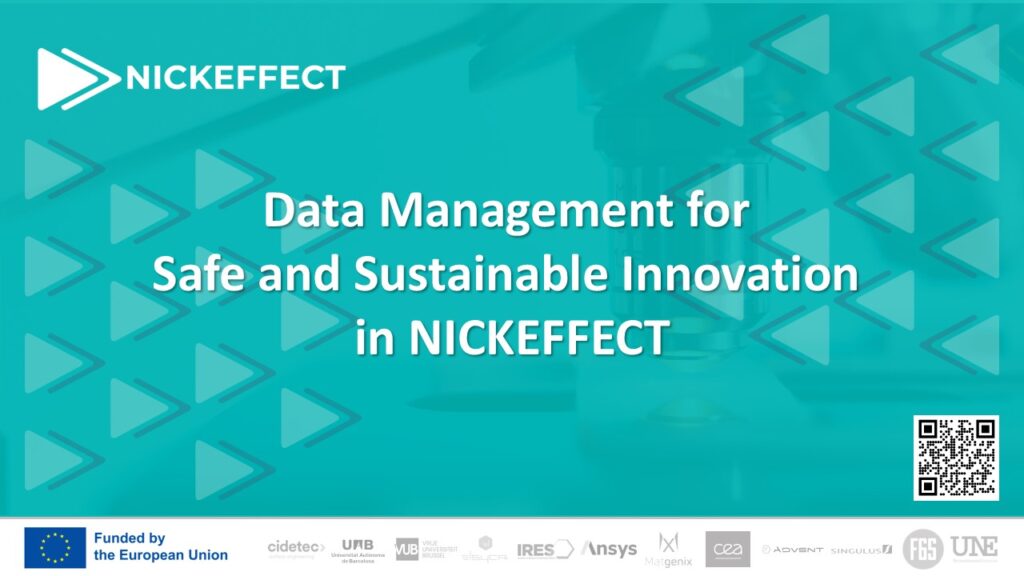Designing next-generation materials that are not only high-performing but also safe and sustainable is an inherently complex task. It requires navigating a landscape marked by interdisciplinary data, multiple stakeholder needs, regulatory constraints, and the urgency to make early-stage design decisions with lasting consequences. In the NICKEFFECT project, these challenges are being met with a powerful data management and decision support infrastructure designed to foster collaboration, improve traceability, and accelerate safe and sustainable innovation.
At the heart of this infrastructure lies a dedicated Materials and Processes Information Management System (M&P IMS), deployed using the Ansys Granta MI platform [1], and a modular Decision Support System (DSS). These tools provide secure, structured access to critical information—ranging from experimental performance data to risk assessments and environmental impacts—enabling researchers, sustainability experts, and regulators to make informed choices throughout the R&D process.

Effective materials data management is more than a technical necessity — it is a strategic enabler [2]. In materials science, chemistry, and engineering, well-curated data enables reproducibility, accelerates discovery, and supports the digital transformation of research and development. By ensuring consistency, accessibility, and full traceability, data management bridges the gap between lab-scale research and real-world application. It empowers users to reuse and connect data across experiments, feed simulations, and evaluate sustainability risks early and reliably.
Structuring this diverse data requires careful schema design. The M&P IMS uses a customized schema that links experimental results with relevant metadata such as materials, batches, samples, equipment, and chemical substances. These structured relationships ensure that data can be searched, compared, and interpreted correctly across the project.

To make the system accessible to all partners—regardless of their expertise in data handling—the data upload process has been simplified through the use of tailored Excel templates. These templates allow users to format their data offline and upload it through a web interface. Once uploaded, the system automatically creates links between records to maintain traceability. Other types of users can edit data directly in the web interfaces or using the system python APIs.
Already, over 300 curated records have been added, primarily by materials development partners. These records are automatically connected, enabling users to trace each test back to the specific sample, batch, and formulation involved.

On top of this curated and structured dataset, the Decision Support System transforms raw data into actionable insights. It provides a suite of modular applications tailored to different user needs, allowing users to compare electrochemical performance data, perform streamlined regulatory risk assessments, and estimate the environmental impact of new materials and processes—all from within the same system.

These tools are not only useful for experts but also empower non-specialists, such as lab scientists, to access complex assessments with minimal training. By making relevant information accessible and understandable, the DSS supports Safe and Sustainable by Design workflows and helps avoid costly redesigns later in development.
Looking ahead, the NICKEFFECT project’s data infrastructure will continue to evolve. Currently we are enriching the system with tools for decision making concerning regulations and environmental impact, as well as streamlined machine learning tools for design of experiments and property prediction. As these new functionalities and use cases emerge, the M&P IMS and DSS will remain adaptable and user-friendly. More than just a data repository, this system lays the foundation for responsible innovation—combining best practices in data management with user-centric decision support to drive the development of safer, more sustainable materials from the ground up.
[1] https://www.ansys.com/en-gb/products/materials/granta-mi
[2] https://www.ansys.com/en-gb/resource-center/white-paper/business-case-material-intelligence
